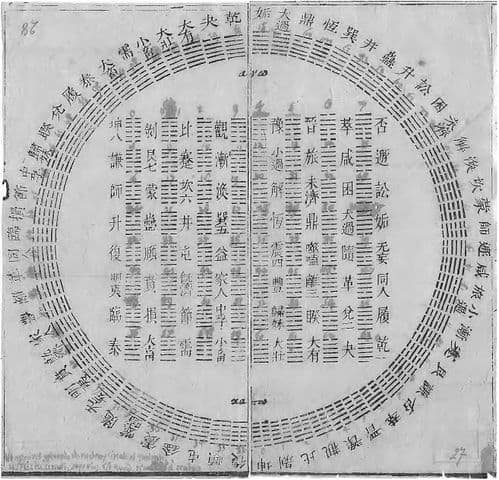
I Ching: Secret Computer of Ancient Gods That Predates Binary Code By 5,000 Years
Creation of binary code inspired by 5,000-year-old text!
By Vicky Verma | How & Whys
The system of using the Chinese “Book of Changes” or “Classic of Changes” (“I-Ching”), which is rooted in the deepest antiquity, reveals at its core the binary number system and the positional principle of writing numbers upon careful analysis. The I-Ching predates binary code by as much as 5,000 years and gives us reason to question our faith in digital technology.
It seems incredible that the ancient Chinese possessed such mathematical knowledge that our modern civilization began to actively use only in the twentieth century, entering the era of computing technology based precisely on these principles. And even more incredible seems the similarity of the principles contained in the “Book of Changes” with the latest achievements of modern physics.
From ancient times to the present day, the I-Ching has had a tremendous impact on the entire life of Chinese society. The influence of the ideas of the “Book of Changes” can be found in all philosophical schools of both ancient and modern China. In its practical application, it is regularly used in every Chinese family, and recently, it has become widely used all over the world.

The specificity of using the I-Ching is that it does not predict the future but determines a detailed description of the current situation and recommendations, following which you can come to an optimal solution to problems and favourable development of events. In other words, the “Book of Changes” claims that its methodology can be used to determine the properties of any life situation and its development trends.
According to the theory of the I-Ching, the entire world process is an alternation of situations, resulting from the interaction and struggle of the forces of light and darkness, tension and compliance. Each of these situations is symbolically expressed by one of the 64 signs (hexagrams), consisting of two types of features.

One type is whole horizontal lines called yang. The other one is the horizontal stroke interrupted in the middle, called “yin.” Each icon (hexagram) has six such features placed in various combinations, for example:
Each hexagram consists of two so-called trigrams (an icon of three strokes). It is believed that the lower trigram refers to the inner life, to the advancing and creating, and the upper one to the outer world, to the receding, to the collapsing.
All known sources attribute the invention of trigrams to the legendary ruler of ancient China, Fu Xi, who was in power, as is commonly believed, from 2852 to 2737 BC (5000 years ago). Fu Xi depicted these symbols in the following sequence:
In the philosophy of the I-Ching, the reality is not entirely real. It is something more like a dream or an illusion. This dream of reality arises from the binaries of Yin and Yang, as they play out their infinite combinations. It is not surprising from the I-Ching’s perspective that anything in the dream of reality can be represented as a model of its binary constituents, in a string of 1s and 0s, processed by a computer.
Leibniz’s Work Influenced by I-Ching
Gottfried Wilhelm Leibniz’s work influenced centuries of technological innovation, and his own influencers included Chinese I-Ching. Leibniz, a philosopher, and mathematician developed the binary number system that is still used today, but his approach to writing in binary code made direct references to the hexagrams and cosmological ideas found in the I-Ching.

He is considered to be one of the first Western intellectuals to adopt ideas from traditional Chinese philosophies. He wrote about his own fascination with the manual (I-Ching) and noted that the text’s hexagrams corresponded with the binary numbers from 000000 to 111111, arguing that the authors were much more advanced in mathematics than Leibniz’s contemporaries believed.
Leibniz claimed that all matter can be represented in binary sequencing as ones and zeros or, as it was expressed in ancient literature, Yin and Yang, which he identified as terms that represent polar abstract concepts.
By seeing binary representation in ancient texts, Leibniz was compelled to continue his own writing of binary systems. This, in turn, became the language of modern computing still being used today, thus linking a 5,000-year-old text to the formation of the digital age.
This article was originally published by How & Whys.
